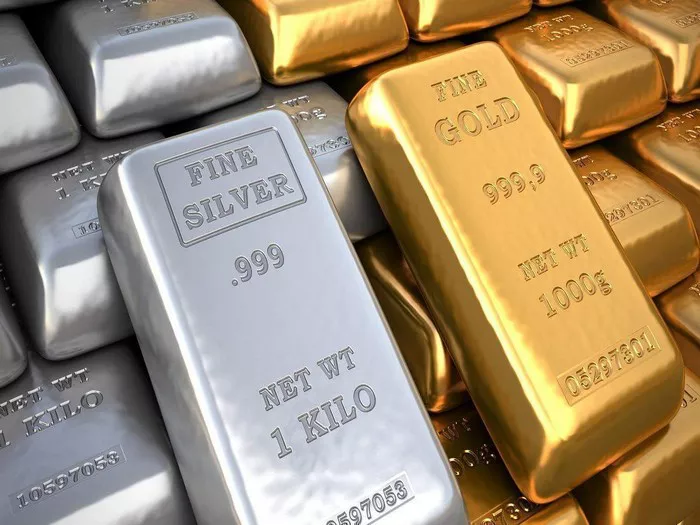In the realm of investing, precious metals have always held a special allure. Among them, gold and silver stand out as timeless assets with intrinsic value and historical significance. However, when it comes to deciding between the two, investors often find themselves in a dilemma. Is it better to invest in gold or silver? This question doesn’t have a one-size-fits-all answer; rather, it depends on various factors such as market conditions, investment goals, risk tolerance, and economic outlook. Let’s delve into the comparison between gold and silver as investment options to better understand their respective merits and drawbacks.
1. Historical Perspective:
Gold has been a symbol of wealth and prosperity for centuries, revered by ancient civilizations and modern societies alike. Its scarcity, durability, and aesthetic appeal have made it a preferred store of value and medium of exchange throughout history. Silver also boasts a rich historical legacy as a monetary metal and has been used for coinage and trade for thousands of years. However, while gold has always been associated with luxury and prestige, silver has often been considered the “poor man’s gold” due to its lower price and accessibility.
2. Market Dynamics:
Gold and silver markets operate independently but are influenced by similar macroeconomic factors such as inflation, currency fluctuations, geopolitical tensions, and central bank policies. Gold tends to be more stable and less volatile compared to silver, making it a popular choice for hedging against economic uncertainty and preserving wealth. Silver, on the other hand, is known for its higher volatility, which can lead to greater profit potential but also increased risk. Additionally, silver has industrial applications in sectors such as electronics, photography, and healthcare, which can affect its price dynamics.
3. Price Performance:
Historically, gold has outperformed silver in terms of price appreciation over the long term. While both metals have experienced significant fluctuations in value, gold has maintained its purchasing power better during periods of economic turmoil and market downturns. Silver, despite its industrial demand, has been more susceptible to price manipulation and speculative trading, leading to greater price volatility. However, during bull markets and periods of economic growth, silver has the potential to outperform gold due to its lower price point and higher beta coefficient.
4. Accessibility and Affordability:
One of the key advantages of silver as an investment is its affordability and accessibility to a wider range of investors. With a lower price per ounce compared to gold, silver allows individuals with limited capital to enter the precious metals market and diversify their portfolios. Additionally, silver is available in various forms such as coins, bars, and rounds, making it easier for investors to purchase and store. Gold, while prestigious and highly liquid, may be out of reach for some investors due to its higher cost and minimum investment requirements.
5. Portfolio Diversification:
Both gold and silver are considered safe-haven assets that can provide diversification benefits to investment portfolios. By allocating a portion of assets to precious metals, investors can mitigate the risks associated with traditional financial instruments such as stocks, bonds, and currencies. Gold, with its proven track record as a store of value, acts as a hedge against inflation and currency depreciation. Silver, with its dual role as a monetary metal and industrial commodity, offers a unique blend of wealth preservation and growth potential, making it an attractive diversifier for investors seeking exposure to alternative assets.
6. Storage and Liquidity:
When it comes to storage and liquidity, gold holds a distinct advantage over silver. Gold bars and coins are highly portable and easily recognizable, making them ideal for storage in secure vaults or safety deposit boxes. Moreover, gold enjoys greater liquidity in the global market, with a well-established network of dealers, refineries, and exchanges facilitating trading and investment. Silver, while also liquid and widely traded, may require more storage space due to its lower value per ounce, especially for larger quantities. Additionally, the demand for silver can be more volatile, leading to occasional shortages and supply disruptions.
Conclusion:
In conclusion, the decision to invest in gold or silver ultimately depends on individual preferences, financial goals, and risk tolerance. Gold, with its historical significance, stability, and liquidity, remains a cornerstone of wealth preservation and portfolio diversification. Silver, on the other hand, offers affordability, volatility, and industrial utility, making it an attractive option for investors seeking higher returns and willing to tolerate greater risk. Ultimately, a well-balanced investment strategy may include both gold and silver, taking advantage of their respective strengths and weaknesses to navigate the complexities of the global financial markets. Whether one chooses gold, silver, or a combination of both, the timeless allure of precious metals as a tangible store of value endures in an ever-changing economic landscape.

